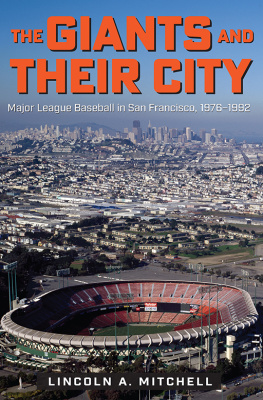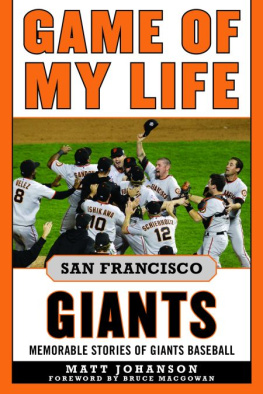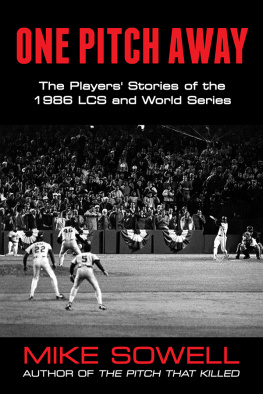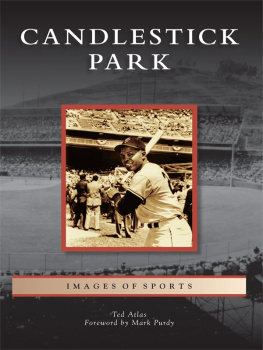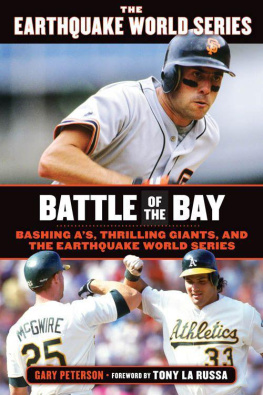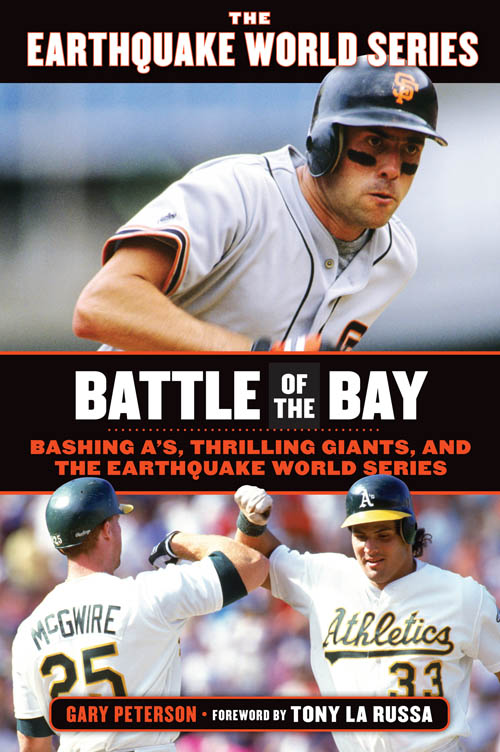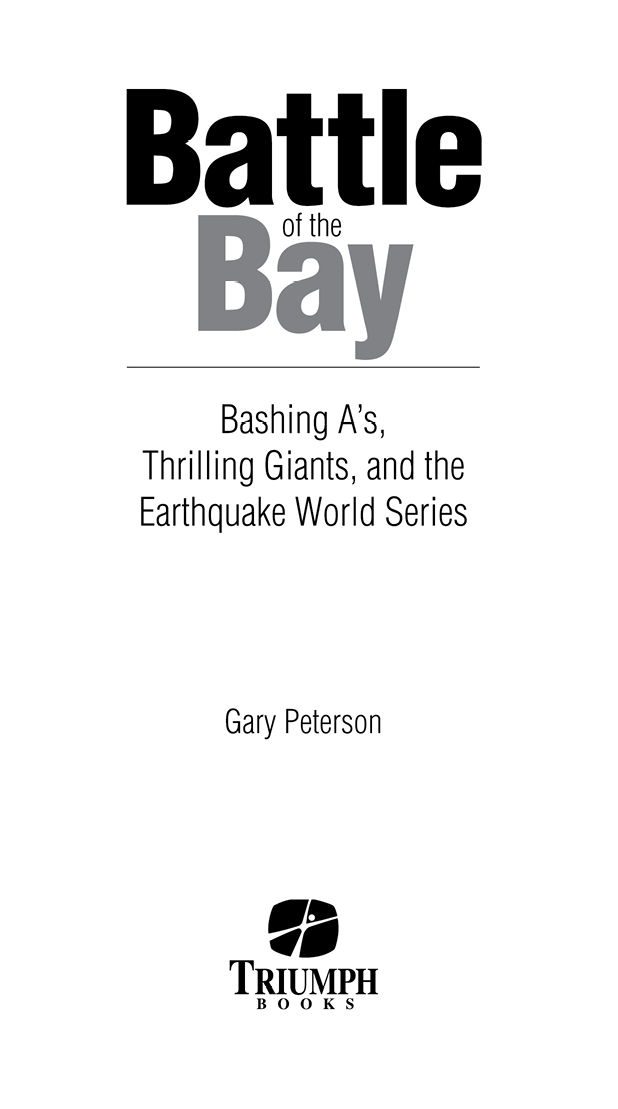
To my mom, for impressing upon me the value of making things fun, and to my dad, for showing me the importance of doing things right.
Contents
Foreword by Tony La Russa
The 1989 World Series will always be remembered for Mother Nature upstaging a rare and potentially classic competition between neighboring teams. The Loma Prieta earthquake on October 17, 1989, with a magnitude of 6.9, severely shook the San Francisco Bay Area just minutes before Game 3s first pitch. It became the dominant storyline of the 89 World Series and rightfully so.
The timing of the earthquake and its tragic and destructive effects overwhelmed every other aspect of the As-Giants matchup. The stories relating to the earthquakedescribing tragedy, heroism, and rebuildingmade for compelling reading. Whether the As could win two more games before the Giants could win four was a minor win/lose question versus the life-and-death issues suddenly thrust upon the region.
That said, the World Series story that was pushed aside by the earthquake deserves to be told and had its own fascinations. Two teams from the same geographic area were playing to determine the world baseball champion. That hadnt happened since 1956, two years before the Dodgers and Giants moved west. Before their migration it happened more often in the New York City area.
The As versus Giants had that historical significance. In addition a healthy competition had developed between the organizations during the years preceding 1989. The As were seeking their fourth title since moving from Kansas City in 1968. The Giants were making their second World Series appearance since leaving New York. Their first, in 1962, was a tough loss in seven games to the Yankees.
On paper the so-called Bay Bridge World Series figured to be an outstanding competition that could be decided in either direction. Both teams featured offenses that were among the very best in the major leagues. Both had solid pitching staffs at the beginning and end of games. Both had won their divisions and League Championship Series in convincing fashion. The Cubs and Blue Jays were very good teams that were beaten in five games. The ALCS ended on Sunday, and the NLCS ended on Monday.
Games 1 and 2 of the 89 World Series were played in Oakland starting on Saturday, October 14. Our wins in both games were remarkably similar and were highlighted by a cruel irony as far as the Giants were concerned. As starting pitchers Dave Stewart and Mike Moore both turned in dominating performances. Along with their fastballs and sliders, they had excellent splitters. The irony was that Dave Duncan, the As outstanding pitching coach, had perfected his coaching of that pitch in part thanks to Giants manager Roger Craig.
Craig was a baseball treasure. He had a storied career as a major league pitcher and became one of the games best pitching coaches. As a pitching coach on Sparky Andersons Tigers, he was one of the pioneers in developing the split-fingered fastball or forkball. Imagine his discomfort watching Stewart and Moore handcuff his Giants hitters with his signature pitch.
Craig had an outgoing personality, which was on display before and after games. He was a hard-nosed competitor. An example of his competitiveness, which provided a perfect lead into the pre-Game 3 earthquake, was his postgame comments after Game 2. He was his usual positive and competitive self. His statements were that the As and their fans had their fun for the first two games. But once the Giants, and especially their fans, returned to Candlestick Park, they would have a loud and uncomfortable reception ready for the As and their fans.
I was so certain that Craig had inspired Giants players and fans that our staff had made it a point to warn our team to expect their energy and to be prepared to bring our bunker mentality to the contests.
In fact, Craigs combination of warning us and challenging their fans became my answer to the most frequently asked World Series earthquake question: where were you when the Loma Prieta earthquake struck? I was sitting in the third-base dugout, awaiting team introductions. There were some players near the left-field foul line getting legs and arms loose. At 5:04 pm there was a definite noise and movement experience. My first impression was that the noise that close to the introductions was Giants fans responding to Rogers challenge. My first thought was that our bunker mentality would have to start much earlier than the first pitch.
My first indication that something bigger was afoot was the violent swaying of the outfield light standards. Once that realization hit home, the environment at Candlestick Park became very surreal, fueled by such things as fans reporting what they were learning about the devastating consequences throughout both sides of the Bay Area, the uncertainty of damage at the stadium, and the specter of potential aftershocks.
Commissioner Fay Vincent quickly decided to cancel Game 3 and suspend action until further notice. The immediate As response was to collect our teammates and families on buses and return to the Oakland Coliseum. We had to detour south to and around San Jose and then north to Oakland. A 30-to 45-minute trip became a four-and-a-half-hour nightmare crawl. The atmosphere on the buses was a very tense combination of concern, confusion, and uncertainty.
The interruption of World Series play lasted 10 days. The unprecedented stoppage placed both teams in uncharted situations. We both attempted to maintain our physical and mental conditioning. The latter was especially tough because our winning and losing concerns paled in comparison to the difficulties everyone in the Bay Area was experiencing.
An important issue to confront was whether play should be resumed. Some were calling for the Series to be canceled without any resumption of play. Some critics went as far as to accuse our players of being selfish for ignoring the suffering and pursuing the championship prize. In my mind that issue quickly became moot when other sports and entertainment quickly resumed their usual schedules.
The Athletics primary focus was keeping our mental edge. A perfect example of the lengths our organization would go to maintain our edge was the two-day trip to our Phoenix spring training complex when the Game 3 reschedule date was announced. Our ownership and front office supported the move, and once we were in uniform there, practicing before thousands of excited fans, the therapeutic benefits were obvious.
The As won Games 3 and 4 with the same starting pitchers, Stewart and Moore, who had shackled the Giants in Games 1 and 2. Our sweep of the Giants did not reflect how good the National League champions were. It was much more a set of advantages that added up to the four straight wins. The Giants pitching at the end was ailing and poor in spots. Ours was very talented and healthy. Our frame of mind was virtually perfect. We remembered the heartbreaking loss to the Dodgers in the 1988 World Series after dominating the regular season and ALCS and how we had made it a rallying cry in 1989from the first day of spring training through the fourth game of the World Series.
The As were on a mission to get back to the World Series and not be denied. It helped us deal with tough competition from manager Doug Raders Angels and John Wathans Royals. It also helped sustain us through several key injuries in the first half of the season. Most importantly, it kept everyone focused on the finish line.


